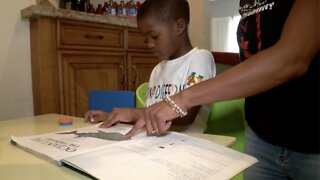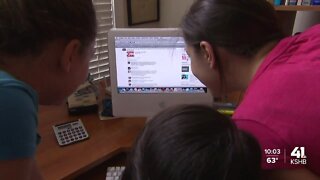Premium Only Content

How Sensory Reinforcement Helps Children with Autism Develop Hand Skills
This video explains how to use sensory reinforcers to help children or adults on the autism spectrum or people with other developmental disabilities to develop hand skills. Many disabled individuals have sensory processing challenges and avoid using their hands. They may decrease anxiety and self-regulate by rocking, spinning, flapping or shaking objects in front of their eyes. While this is OK, it becomes a problem when people do this all the time to the exclusion of learning functional hand skills such as grasping a spoon to eat, placing objects into a container or rings on a stack.
A reinforcer is a reward or an event that increases the likelihood of a behavior occurring. The term positive reinforcement refers to a behavior that we want to encourage such as pointing or signing “more” to indicate that the individual wants the horse to resume trotting.
Sensory reinforcers provide the type of stimulation that helps one’s brain to organize the sensory information received from the sense organs and use it to perform motor skills such as walking or cutting a sandwich. The sensory systems related to movement (vestibular), body awareness (proprioception) and touch (tactile system) are of particular importance because people with sensory processing disorders (SPD) often crave these sensory experiences and are motivated to work to receive them.
In the video you will see a young man who seeks movement by rocking, swaying or waving objects in front of his face. He also seeks vibration and the sensation of a heavy cushion on his lap. Weighted materials, vibration and activities that require force such as tug of war all stimulate the muscles, joints and tendons to increase proprioception. Another young man in a video needs to move all the time. He also engages in maladaptive behaviors including spitting on his hands and rubbing them on everything. He likes materials that are heavy, vibrate or require force. He uses force to push balls into a small container opening. The sequence of walking across the room to retrieve a ball from a vibrating container and returning to his table to push it into the container meets his sensory needs and makes him happier as well as more hygienic.
Learn more about activity adaptations on my website and blog:
http://www.RecyclingOT.com
http://www.RecyclingOT.blogspot.com
http://www.FromFlappingtoFunction.com
-
 2:48
2:48
KMTV
3 years agoSensory Santa helps people with special needs and autism
170 -
 5:00
5:00
Newsy
2 years agoHow The Pandemic Impacts Children With Autism
4301 -
 2:57
2:57
WKBW
2 years agoDiagnosing autism in young children
36 -
 2:12
2:12
KSHB
2 years agoKansas City organization helps parents discuss social media with their children
6 -
 2:16
2:16
KJRH
2 years agoCAN Superhero Challenge helps Oklahoma children
81 -
 45:39
45:39
Survive History
19 hours ago $10.98 earnedCould You Survive in the Shield Wall at the Battle of Hastings?
81.3K6 -
 1:50:28
1:50:28
TheDozenPodcast
18 hours agoViolence, Abuse, Jail, Reform: Michael Maisey
114K4 -
 23:01
23:01
Mrgunsngear
1 day ago $6.81 earnedWolfpack Armory AW15 MK5 AR-15 Review 🇺🇸
97.2K12 -
 25:59
25:59
TampaAerialMedia
1 day ago $4.58 earnedUpdate ANNA MARIA ISLAND 2025
62.3K4 -
 59:31
59:31
Squaring The Circle, A Randall Carlson Podcast
20 hours ago#039: How Politics & War, Art & Science Shape Our World; A Cultural Commentary From Randall Carlson
47.5K3